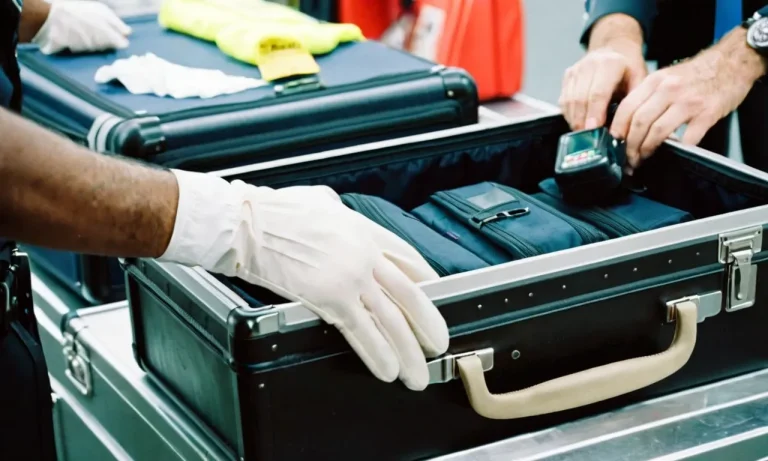How To Grow Tomatoes: A Complete Guide
Tomatoes are one of the most popular vegetables to grow in home gardens. If you’re short on time, here’s a quick answer to growing great tomatoes: make sure they get plenty of sunlight, water them consistently, use a nutrient-rich soil, and stake or cage plants to support heavy fruit.
In this comprehensive guide, you’ll learn everything you need to know about successfully growing tasty, abundant tomatoes in your own backyard.
Choosing the Right Tomato Variety
When it comes to growing tomatoes, choosing the right variety is crucial for a successful harvest. With so many options available, it can be overwhelming to make a decision. Here are some factors to consider when selecting the perfect tomato variety for your garden.
Determinate vs. Indeterminate
One of the first decisions you’ll need to make is whether to grow determinate or indeterminate tomato plants. Determinate varieties grow to a certain height and produce fruit all at once, making them ideal for those who want a large harvest all at once for canning or preserving.
Indeterminate varieties, on the other hand, continue to grow and produce fruit throughout the season, providing a steady supply of tomatoes for fresh eating. Consider your gardening goals and available space when making this choice.
Hybrid vs. Heirloom
Another important consideration is whether to grow hybrid or heirloom tomato varieties. Hybrid tomatoes are created by crossbreeding different varieties to produce specific traits, such as disease resistance or higher yields.
These varieties are often more uniform in appearance and have a longer shelf life. Heirloom tomatoes, on the other hand, are open-pollinated varieties that have been passed down through generations. They often have unique flavors and come in a wide range of colors and shapes.
Decide whether you prioritize reliability and uniformity or prefer the taste and diversity of heirloom tomatoes.
Best Varieties for Your Climate
Lastly, it’s important to choose tomato varieties that are well-suited to your climate. Tomatoes thrive in warm weather, but some varieties are better adapted to cooler or hotter climates. Consider the average temperatures and length of your growing season when selecting tomato varieties.
It’s also a good idea to consult local gardening resources or talk to experienced gardeners in your area to get recommendations for the best tomato varieties for your specific climate.
Remember, the choice of tomato variety is a personal one, and what works for one gardener may not work for another. Experimentation is key to finding the perfect tomato variety that suits your taste preferences, gardening goals, and growing conditions. Happy tomato growing!
Starting Tomatoes from Seed
When to Start Seeds
Starting tomatoes from seed is an economical and rewarding way to grow your own delicious tomatoes. The timing of when to start your seeds is crucial for successful germination and growth. In general, tomato seeds should be started indoors 6-8 weeks before the last frost date in your area.
This gives the seedlings enough time to establish strong roots and develop healthy foliage before being transplanted outdoors.
It’s important to know the average last frost date in your region, as this will help you determine the best time to start your tomato seeds. You can find this information from local gardening resources or websites like The Old Farmer’s Almanac.
By starting your seeds at the right time, you can ensure that your tomato plants will be ready for transplanting when the weather is suitable.
Germinating Tomato Seeds
Germinating tomato seeds is a simple process that requires a few key steps. Firstly, fill a seed tray or small pots with a quality seed-starting mix. Moisten the soil lightly, but make sure it’s not too wet as excessive moisture can lead to fungal diseases.
Next, plant the tomato seeds about 1/4 inch deep in the soil, spacing them about an inch apart. Cover the seeds with a thin layer of soil and gently press down to ensure good seed-to-soil contact.
Place the seed tray or pots in a warm location, ideally around 70-80°F (21-27°C). You can use a seedling heat mat to provide consistent warmth if needed. Keep the soil consistently moist, but not waterlogged, by misting with water or using a spray bottle.
Germination usually occurs within 7-10 days, but it can vary depending on the tomato variety.
Caring for Seedlings
Once the tomato seeds have germinated and the seedlings have emerged, it’s important to provide them with proper care to ensure healthy growth. Place the seedlings in a well-lit area, such as a sunny windowsill or under grow lights.
They need at least 12-14 hours of bright light each day to develop sturdy stems and prevent leggy growth.
As the seedlings grow, make sure to keep the soil evenly moist. Water the plants from the bottom to prevent damping-off disease. You can also use a diluted liquid fertilizer to provide the seedlings with essential nutrients.
When the seedlings have developed their first true leaves, you can transplant them into larger containers or separate them into individual pots.
Remember to gradually acclimate the seedlings to outdoor conditions before transplanting them into the garden. This process, known as hardening off, involves gradually exposing the seedlings to outdoor temperatures and sunlight over the course of a week or two.
This helps the plants adjust to the outdoor environment and reduces the risk of transplant shock.
Starting tomatoes from seed can be a fun and rewarding experience. By following these guidelines on when to start seeds, germinating tomato seeds, and caring for seedlings, you’ll be well on your way to growing your own delicious tomatoes!
Transplanting Tomatoes
Transplanting tomatoes is a crucial step in the growing process that helps ensure healthy and productive plants. It involves moving young tomato seedlings from their pots to the garden bed. This article will guide you through the necessary steps to successfully transplant your tomatoes.
Hardening Off Seedlings
Before transplanting your tomato seedlings, it’s important to harden them off. Hardening off is the process of gradually acclimating the seedlings to outdoor conditions. Start by placing your seedlings in a shaded area outdoors for a few hours each day.
Gradually increase the exposure to sunlight and outdoor elements over the course of a week or two. This helps the seedlings adjust to the temperature, wind, and sunlight, reducing the shock of transplantation.
Preparing the Garden Bed
To ensure the success of your transplanted tomatoes, it’s vital to prepare the garden bed properly. Choose a sunny spot in your garden with well-drained soil. Remove any weeds or grass from the area and loosen the soil using a garden fork or tiller.
Incorporate organic matter, such as compost or well-rotted manure, to improve soil fertility and drainage. This will provide a favorable environment for the tomato plants to establish and thrive.
Planting Techniques
When transplanting your tomatoes, follow these planting techniques for optimal results. Dig a hole in the garden bed that is slightly deeper than the pot the seedling is in. Gently remove the seedling from its pot, being careful not to damage the roots.
Place the seedling in the hole, ensuring that the soil level around the stem matches the level of the surrounding soil. Firmly press the soil around the roots to eliminate air pockets. Water the newly transplanted seedlings thoroughly to help them settle into their new environment.
Pro tip: To provide additional support for your tomato plants, consider using stakes or cages to prevent them from falling over as they grow.
For more detailed information on transplanting tomatoes, you can visit gardeningknowhow.com. They offer a comprehensive guide on gardening techniques and tips.
Caring for Tomato Plants
Supporting Vine Varieties
Tomatoes are known for their vining growth habit, and it’s essential to provide proper support to help them grow and thrive. One popular method is to use stakes or trellises to support the plants as they grow taller.
This not only helps prevent the plants from sprawling on the ground but also allows better air circulation around the foliage, reducing the risk of diseases. Another option is to use tomato cages, which are made of wire and provide support for the plants by encircling them.
Whichever method you choose, it’s important to start supporting the plants early in their growth to avoid damaging the stems or roots later on.
Watering and Fertilizing
Tomatoes require regular and consistent watering to ensure healthy growth and the production of juicy fruits. The general rule of thumb is to provide about 1-1.5 inches of water per week, either through rainfall or manual watering.
However, it’s crucial to avoid overwatering, as it can lead to root rot and other diseases. Mulching the soil around the plants can help retain moisture and regulate soil temperature.
When it comes to fertilizing tomato plants, it’s best to use a balanced fertilizer with equal amounts of nitrogen, phosphorus, and potassium. This will promote overall plant growth and fruit development.
It’s recommended to apply fertilizer when planting the seedlings and then again every few weeks throughout the growing season. Be careful not to over-fertilize, as it can result in excessive foliage growth at the expense of fruit production.
Pruning for Healthier Plants
Pruning tomato plants is an essential practice that promotes healthier growth and higher fruit yields. It involves removing suckers, which are small shoots that develop in the leaf axils, between the main stem and the branches.
By removing these suckers, the plant’s energy is redirected towards fruit production, resulting in larger and more flavorful tomatoes.
It’s important to note that not all tomato varieties require pruning. Determinate varieties, which tend to have a more compact growth habit and a predetermined fruit set, usually don’t require pruning.
Indeterminate varieties, on the other hand, benefit from pruning to maintain a more manageable size and improve airflow.
To prune tomato plants, use clean and sharp garden shears to remove the suckers when they are small, preferably before they grow more than a few inches. Be careful not to damage the main stem or other branches during the pruning process.
Remember, each tomato plant is unique, and it’s important to monitor their specific needs throughout the growing season. By providing proper support, watering, fertilizing, and pruning, you’ll be well on your way to growing healthy and bountiful tomato plants!
Sources:
– University of California Agriculture and Natural Resources: https://ucanr.edu/sites/placernevadasmallfarms/files/111703.pdf
– Penn State Extension: https://extension.psu.edu/tomato-fruit-problems
Troubleshooting Common Tomato Problems
Growing tomatoes can be a rewarding experience, but it can also come with its fair share of challenges. Here are some common tomato problems and how to troubleshoot them:
Blossom Drop
One of the most frustrating problems that tomato growers face is blossom drop. Blossom drop occurs when the flowers on your tomato plants fall off before they have a chance to develop into fruit. This can be caused by a variety of factors, including high temperatures, low humidity, and inadequate pollination.
To prevent blossom drop, it’s important to keep your tomato plants well-watered and provide them with adequate shade during hot summer days. You can also try hand pollinating the flowers by gently shaking the plants or using a small paintbrush to transfer pollen from one flower to another.
If all else fails, consider planting varieties that are more resistant to blossom drop.
Cracks in Fruits
Another common issue that tomato growers encounter is cracks in the fruits. Cracks in tomatoes can occur due to fluctuations in moisture levels, especially when the plants receive irregular watering. Rapid growth spurts can also cause the skin of the tomato to crack.
To prevent fruit cracking, it’s important to maintain consistent soil moisture levels by watering your plants deeply and regularly. Mulching the soil around the plants can also help retain moisture. Additionally, avoid over-fertilizing your plants, as this can lead to excessive growth and increase the chances of cracking.
Pest Management
Pests can be a major headache for tomato growers, as they can damage both the foliage and the fruits. Common tomato pests include aphids, caterpillars, and whiteflies.
To manage pests in your tomato garden, you can try using natural predators such as ladybugs or lacewings. Additionally, regular inspection of your plants can help you identify and remove any pest infestations before they become a major problem.
If natural methods fail, you may need to resort to organic insecticides or insecticidal soaps to control the pests.
For more detailed information on troubleshooting tomato problems, you can visit websites such as extension.umn.edu or gardenerspath.com.
Conclusion
With the right varieties, soil preparation, planting techniques and ongoing care, you can grow tomato plants that yield abundant, delicious fruits all season long. This guide covers everything you need – now all that’s left is to get out there and start growing!








